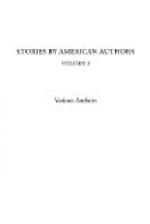The people in New York saw the balloons as they successively rose from the four vessels, and wonderingly watched their progress.
They saw the first of them gently sail toward the city until about over the Roman Catholic Cathedral on Fifth Avenue. Then a dark object seemed to fall from the car, the lightened balloon shot upward, the object struck the roof of the cathedral there was a fearful explosion, a trembling of the earth as if an angry volcano were beneath, and the crash of falling buildings followed.
Through the great clouds of dust and smoke it could be seen that not only was the cathedral shattered, but that the walls of every building adjacent to the square on which it stood were down.
The Spaniards were dropping nitro-glycerine bombs into the city from the balloons. They knew how long it would take the breeze to waft the air-ships over the built-up portion, and it was an easy matter to adjust clock-work in the car to cause the dropping of the torpedo at about the proper time.
Accuracy was not needed. A shell, filled with fifty or a hundred pounds of dynamite or nitro-glycerine, would be sure to do terrible damage anywhere within a radius of three miles around Madison Square.
A second balloon dropped its charge into the receiving reservoir in Central Park, luckily doing no damage, but throwing up a tremendous jet of water. The third and fourth balloons let fall their dejectiles, the one among the tenements near Tompkins Square destroying an entire block of houses simultaneously; the other on High Bridge, completely shattering that structure, and so breaking the aqueduct through which the city obtains its water supply.
The Spanish admiral now ceased firing voluntarily and sent a message by flag-of-truce announcing his intention to continue the throwing of balloon torpedoes into the city until it capitulated, and, in order to avoid further destruction of property, he renewed the proposal already made.
General Grant, on receiving this message—for the citizens had literally forced him to take active command of the troops—simply remarked:
“Let him fire away!”
But the Safety Committee vehemently protested; and finally, after much discussion, induced Grant to send back word that the terms were accepted.
The situation was, in truth, one of sadness—of bitter humiliation. The Empire City had fallen, and lay at the mercy of a foreign foe. The immense ransom demanded must be raised and paid, or the work of destruction would be resumed until the defenders of the bay removed their torpedoes from the Narrows and permitted the Spanish forces to enter and occupy the metropolis.
VI.
THE FLAG WITH THE LONE STAR.
As it was manifestly impossible to obtain fifty millions of dollars in specie and foreign notes within New York—for all the money in the vaults of the banks and the treasury had long since been sent to other cities—the general government assumed payment of the amount demanded by the Spaniards, which, however, it was decided not to make until just before the expiration of the last of the five days of grace.




